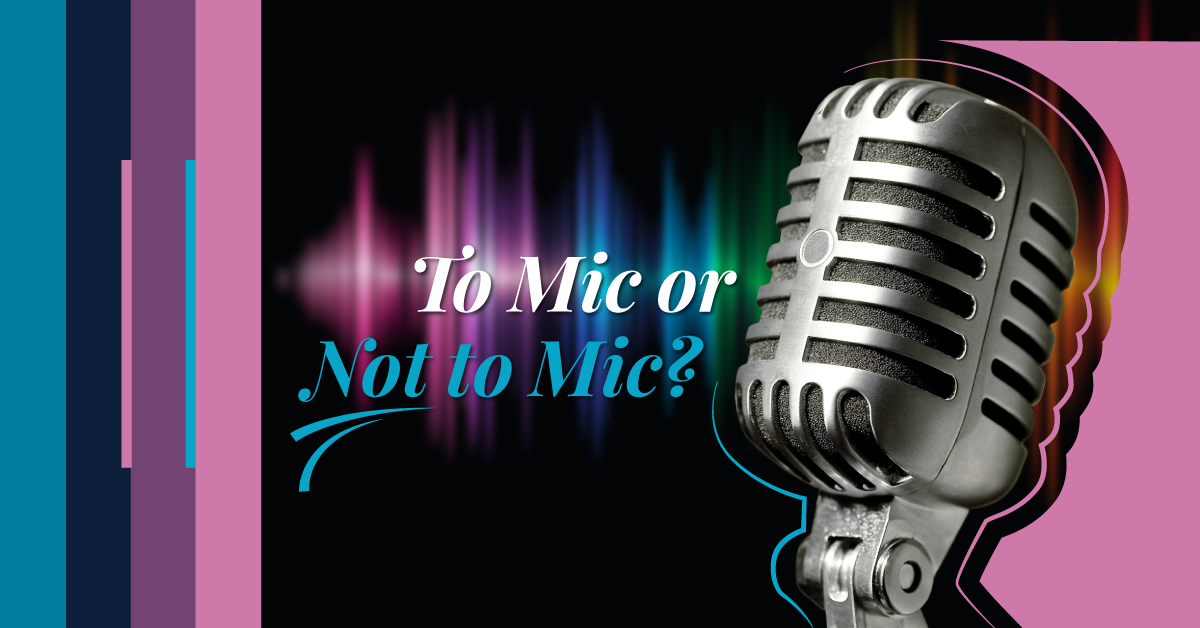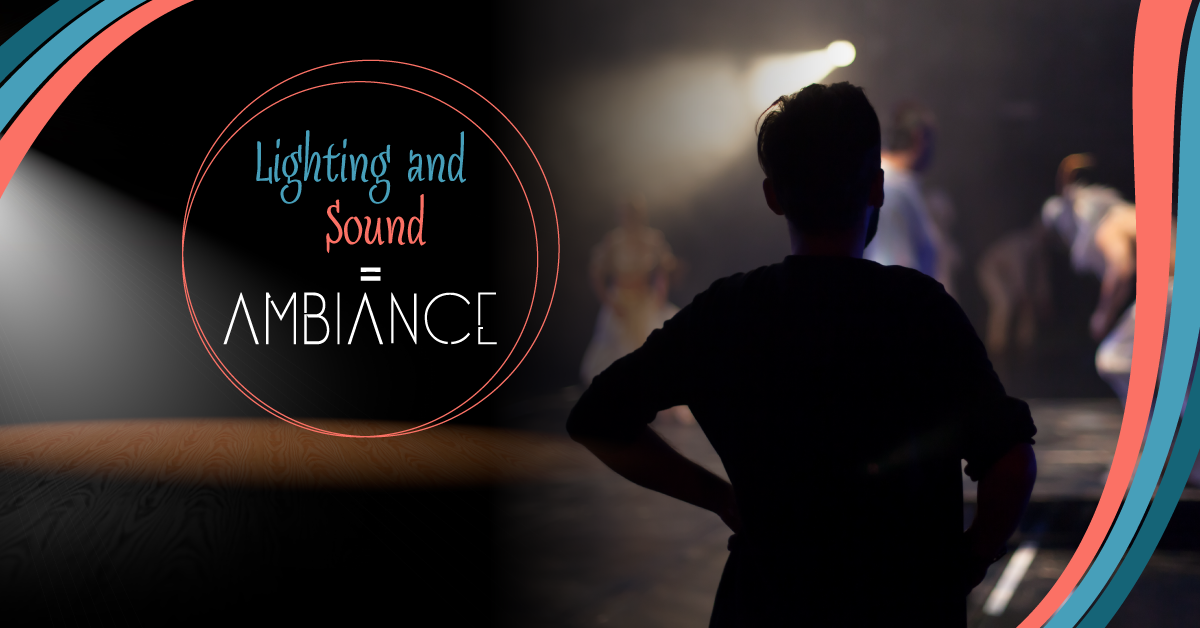To Mic or Not to Mic?
That is the question…and it is yet another decision you must make while producing your upcoming school show. Yes, your students are making smart character choices and acting their hearts out; yes, the show is brilliantly written and staged; yes, the audience is packed with eager friends and family who cannot wait to see your students perform… But none of that matters if the audience can’t hear what’s going on.
Luckily, we have an amazing invention, the microphone (or “mic” for short). These wonderful devices that help to amplify voices can absolutely be an asset to your theatre program, but they do come with some challenges. Consider the following points when you are deciding whether or not to use microphones for your upcoming show.
1. Do you absolutely need to mic the show?
First and foremost – are microphones absolutely necessary in your performance space? How big is your theatre? If your theatre is a giant cavern of an auditorium with hundreds of seats, then mics may be necessary. But if your show is going up in a small studio theatre, then don’t bother!
Is the show a play or a musical? Plays generally do not need mics unless you are in the aforementioned giant cavern of a theatre. Musicals may need microphones depending on if you are using a band or orchestra (versus backing tracks), how loud the musicians are, and where the musicians are located in relation to the performers and the audience.
Are your students loud already? If your students have loud, healthy voices and great vocal technique, using microphones may be overkill. If not, work with your students on projecting their voices and vocal health and hygiene. Check out these Theatrefolk articles for tips: How Do I Solve Projection Issues, Projecting Your Voice Without Yelling, Why Isn’t My Actor Projecting Their Voice, 3 Tips for Keeping Your Voice Healthy, and 3 More Tips for Keeping Your Voice Healthy.
Remind your students that they still need to project their voices while using microphones. A microphone cannot amplify a small, whispery voice enough to be heard. The sound operator can always bring down the volume on a big voice, but they can only crank up the volume so far, and that risks creating feedback.
Who will put the mics on the students during showtime? Do you have enough crew members available backstage? Is your sound operator skilled enough to run the sound mix and turn different microphones on and off at the same time?
And remember, technology can fail. Do you and your students have a troubleshooting plan in place in case a microphone breaks or dies during a show? Will your performers still be able to be heard, or do they depend on the mic?
2. What kind of mics are you going to use?
This will depend on the kind of show you are doing. Some schools have an overhead microphone system that will amplify the general stage area but won’t specifically amplify any one student’s voice. It also will pick up non-voice sounds such as footsteps, set-moving sounds, and other ambient noise.
The most common microphone types that are used in theatres are:
-
- Handheld mics (Wired or wireless; can be attached to a stand)
- Lapel mics (Clips onto a shirt or jacket and attaches to a transmitter that is generally clipped on a microphone belt and worn under clothing/costumes; can be difficult to hear if the student is not facing forward)
- Hair mics (Tiny mics that are set in the hairline with the wire going through the student’s hair and down their back; again usually attached to a transmitter worn under clothes. These mics generally come in black or tan. Can be difficult to use on students with very short hair or shaved heads.)
- Countryman mics (Over-the-ear mics that go across the student’s cheek. These mics also generally come in black or tan. They are fragile and can be difficult to place on student’s heads. Thicker, newscaster style mics tend to be less expensive than the thinner, subtle mics, but are super-visible and distracting to audiences.)
3. How many mics do you need?
You’ll need to decide who gets a microphone. Are you going to mic everyone or just the leads of the show? Will you mic any of the ensemble members? If so, who?
More microphones means higher costs. Do you have enough money in your budget to mic the show? If your school already has a mic system in place, that’s great. But if yours doesn’t, will you purchase or rent microphones? Do you have the correct transmitters and receivers needed? You will have to do some research to figure out what microphones are available to you and your school and whether there are funds available to your department to make the necessary purchases or rentals for your show.
Don’t forget about additional costs: batteries, chargers, body tape, hair clips, and disinfectant (if you’re using hair mics). You’ll also want to consider time: the time you will need to set up the equipment, to train your crew members and performers on correct microphone use, and the additional time at each performance to put on the microphones, do a sound check for each student using a mic, to remove the mics after each performance, put them away safely, and clean up.



